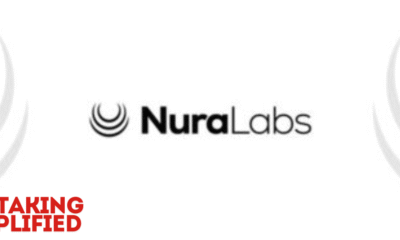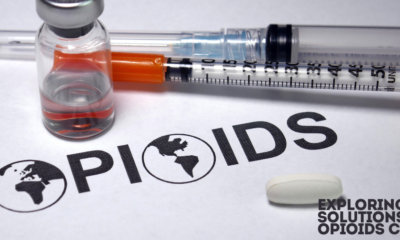Public Health
Public Health Policies and Legislation: How They Shape Our Health

Public health policies and legislation are pivotal in shaping the health landscape of any society. These policies serve as frameworks that guide health-related practices, resource allocation, and strategies to prevent diseases, promote health, and prolong life within the population. From tobacco control laws to vaccination mandates, public health policies and legislation are critical tools that reflect a government’s commitment to its citizens’ well-being. This article will explore the intricate interplay between public health policies, legislation, and the health outcomes of populations. It will delve into the history, significance, impact, challenges, and future prospects of public health policy and legislation.
Understanding Public Health Policies and Legislation
Public Health Policies refer to decisions, plans, and actions undertaken to achieve specific healthcare goals within a society. These policies are generally formulated based on scientific evidence and aim to protect and improve the health of the population. They are often created through collaboration among government bodies, public health experts, researchers, and community organizations.
Public Health Legislation, on the other hand, refers to laws and legal regulations enacted to support public health policy objectives. These legislations serve as the legal framework that ensures compliance, promotes equitable access to health services, and establishes standards for public health interventions. Public health laws can range from regulating air and water quality to mandating vaccinations and food safety standards.
Historical Context of Public Health Policies and Legislation
Public health policies and legislation have evolved significantly over the centuries. In ancient times, public health efforts were rudimentary, focusing mainly on sanitation and epidemic control. The Code of Hammurabi in ancient Babylon (circa 1754 BC) is one of the earliest examples of public health legislation, detailing rules for medical practice and public hygiene. In the Middle Ages, the Black Death spurred efforts to control the spread of disease, including quarantine measures and the establishment of public health boards.
The 19th century marked a pivotal period in public health history, often referred to as the “Sanitary Movement.” During this time, poor living conditions in rapidly industrializing cities led to widespread outbreaks of diseases like cholera and typhoid fever. Public health pioneers like John Snow, who is often credited as the father of modern epidemiology, and Edwin Chadwick advocated for sanitation reforms and cleaner water supplies. Their efforts culminated in landmark legislation like the Public Health Act of 1848 in the United Kingdom, which laid the foundation for modern public health systems.
In the 20th century, public health policies and legislation expanded significantly to include a wide array of issues such as tobacco control, occupational health, immunization programs, and environmental health. The creation of the World Health Organization (WHO) in 1948 further solidified a global approach to public health policy, emphasizing the importance of international collaboration and evidence-based policymaking.
The Framework of Public Health Policy and Legislation
Public health policies and legislation are formulated within a structured framework that involves several key steps:
1) Problem Identification and Research: The first step in public health policy making involves identifying a health issue that needs to be addressed. This is followed by extensive research to understand the problem’s scope, impact, and underlying factors. Data collection, epidemiological studies, and health impact assessments are crucial in this phase.
2) Policy Development: Based on the research findings, public health experts, policymakers, and stakeholders develop potential policy solutions. These solutions must be feasible, evidence-based, and tailored to the needs of the population. During this phase, policymakers also consider economic, social, and cultural factors that may influence policy implementation.
3) Consultation and Consensus Building: Public health policies require buy-in from various stakeholders, including government agencies, healthcare providers, community organizations, and the general public. Public consultations, hearings, and stakeholder meetings are often conducted to gather feedback, address concerns, and build consensus around the proposed policy.
4) Legislation Drafting and Approval: Once a policy proposal is developed, it is translated into legal terms and drafted as a bill or regulation. The draft legislation is then reviewed by legal experts, debated in legislative bodies, and, if approved, becomes law. This process ensures that the policy has a legal basis and can be enforced effectively.
5) Implementation and Enforcement: After a policy is enacted into law, it must be implemented and enforced to achieve its intended goals. This involves setting up administrative mechanisms, allocating resources, training personnel, and monitoring compliance.
6) Evaluation and Revision: The final step in the public health policy cycle is evaluating the policy’s effectiveness. This involves assessing health outcomes, analyzing cost-effectiveness, and identifying areas for improvement. Policies may be revised or updated based on evaluation findings to ensure continued relevance and effectiveness.
Key Areas of Public Health Policies and Legislation
Public health policies and legislation encompass a wide range of issues, reflecting the diverse factors that impact population health. Key areas include:
-
Infectious Disease Control and Vaccination
Infectious disease control is a cornerstone of public health policy. Vaccination programs, quarantine measures, and infection control guidelines are crucial tools for preventing the spread of communicable diseases. Laws mandating vaccination for school entry, healthcare workers, and international travelers have been instrumental in achieving high vaccination coverage rates and reducing the incidence of vaccine-preventable diseases.
The success of vaccination policies is evident in the eradication of smallpox and the near-elimination of polio worldwide. However, vaccine hesitancy remains a challenge, prompting the need for robust legal frameworks that balance individual rights with public health imperatives.
-
Tobacco Control and Substance Abuse
Tobacco use is a leading cause of preventable deaths globally. In response, many countries have enacted comprehensive tobacco control policies, including bans on smoking in public places, restrictions on tobacco advertising, health warnings on packaging, and higher taxes on tobacco products. The WHO Framework Convention on Tobacco Control (FCTC) is a landmark international treaty that provides a legal framework for tobacco control measures.
Similarly, public health policies addressing alcohol and drug abuse focus on regulating access, promoting treatment and rehabilitation, and reducing harm through needle exchange programs and safe consumption spaces.
-
Environmental Health and Safety
Environmental health policies aim to protect the population from harmful environmental exposures, including air and water pollution, toxic substances, and hazardous waste. Legislation such as the Clean Air Act and Clean Water Act in the United States sets national standards for air and water quality, regulates emissions, and enforces penalties for non-compliance.
Climate change has emerged as a critical public health issue in recent years, prompting new policies and regulations to reduce greenhouse gas emissions, promote sustainable development, and build climate-resilient health systems.
-
Food Safety and Nutrition
Food safety legislation is essential to prevent food borne illnesses and ensure the safety of the food supply chain. Regulations on food processing, labeling, and storage are crucial to protect consumers from contaminated or adulterated food products. Public health policies also address nutritional issues, such as reducing trans fats, sodium, and sugar content in processed foods, promoting healthy eating habits, and combating obesity.
-
Occupational Health and Safety
Occupational health policies and legislation protect workers from workplace hazards, prevent occupational diseases and injuries, and promote safe and healthy work environments. Laws like the Occupational Safety and Health Act (OSHA) in the United States establish standards for workplace safety, require employers to provide protective equipment, and mandate regular health inspections.
-
Health Equity and Access to Care
Health equity is a fundamental principle of public health policy, emphasizing the need to ensure that all individuals have equitable access to healthcare services, regardless of socio-economic status, race, or geographic location. Policies that address health disparities include expanding health insurance coverage, improving healthcare infrastructure in underserved areas, and providing targeted interventions for vulnerable populations.
The Impact of Public Health Policies and Legislation
Public health policies and legislation significantly impact population health outcomes, shaping the determinants of health at multiple levels. Effective public health policies can lead to increased life expectancy, reduced disease burden, improved quality of life, and decreased healthcare costs. The following are some examples of the impact of public health policies:
1) Reduction in Infectious Diseases: Vaccination policies have led to the global eradication of smallpox, significant reductions in measles, mumps, and rubella, and the elimination of polio in most parts of the world. Quarantine laws and infection control measures have been crucial in managing outbreaks of diseases such as Ebola, SARS, and COVID-19.
2) Decline in Smoking Rates: Tobacco control policies have led to substantial declines in smoking rates and related health problems, including lung cancer, cardiovascular diseases, and respiratory conditions. Countries with comprehensive tobacco control policies have seen a significant reduction in smoking prevalence, leading to improved public health outcomes.
3) Improvement in Maternal and Child Health: Policies that promote access to maternal and child healthcare services, immunization, nutrition, and family planning have led to significant reductions in maternal and infant mortality rates. Interventions such as the provision of skilled birth attendants, prenatal care, and child health programs have saved millions of lives.
4) Enhanced Environmental Quality: Environmental health policies have improved air and water quality, reducing the incidence of respiratory diseases, cardiovascular conditions, and waterborne illnesses. For example, the Clean Air Act has been credited with preventing thousands of premature deaths and reducing asthma rates in children.
5) Increased Access to Healthcare: Policies that expand health insurance coverage, strengthen primary healthcare systems, and reduce financial barriers to care have increased access to essential health services for millions of people. The Affordable Care Act (ACA) in the United States, for example, significantly reduced the number of uninsured individuals and improved access to preventive services.
Challenges in Public Health Policies and Legislation
Despite the significant progress made in public health policy and legislation, numerous challenges persist:
1) Political and Ideological Barriers: Public health policies often face political resistance, particularly when they involve regulations that restrict individual freedoms, such as vaccination mandates, smoking bans, or sugary drink taxes. Ideological differences and lobbying by vested interests can hinder the development and implementation of evidence-based policies.
2) Resource Constraints: Public health programs often require substantial financial, human, and technological resources. In low- and middle-income countries, limited funding and inadequate healthcare infrastructure pose significant barriers to effective policy implementation.
3) Health Inequities: Despite efforts to promote health equity, disparities in healthcare access, quality, and outcomes persist. Marginalized and vulnerable populations, such as ethnic minorities, low-income groups, and rural communities, often face greater barriers to accessing health services and are disproportionately affected by health risks.
4) Emerging Health Threats: The dynamic nature of public health challenges, including emerging infectious diseases, antibiotic resistance, non-communicable diseases, and climate change, requires continuous adaptation of policies and legislation. Governments must be agile and responsive to evolving health threats to protect public health effectively.
5) Globalization and Cross-Border Issues: The interconnected nature of the modern world means that public health issues are often cross-border in nature, requiring international cooperation and harmonization of policies. Globalization has facilitated the spread of infectious diseases, necessitating stronger international health regulations and collaborative efforts.
The Future of Public Health Policies and Legislation
The future of public health policies and legislation will be shaped by several key trends:
1) Digital Health and Innovation: Advancements in digital health technologies, such as telemedicine, electronic health records, and health data analytics, will drive the evolution of public health policies. Legislation will need to address issues related to data privacy, cyber security, and the ethical use of artificial intelligence in healthcare.
2) Climate Change and Environmental Health: Climate change is expected to exacerbate health risks, including heatwaves, vector-borne diseases, and food insecurity. Public health policies will increasingly need to incorporate climate adaptation and mitigation strategies, promote sustainable practices, and enhance disaster preparedness and response.
3) Focus on Mental Health: The growing recognition of mental health as a critical component of overall health will drive the development of comprehensive mental health policies and legislation. This includes efforts to reduce stigma, expand access to mental health services, and integrate mental health into primary care.
4) Strengthening Health Systems Resilience: The COVID-19 pandemic underscored the importance of resilient health systems capable of withstanding shocks and ensuring continuity of care. Future public health policies will focus on strengthening health system capacity, improving supply chain management, and building a robust healthcare workforce.
5) Equity-Centered Policies: The COVID-19 pandemic also highlighted stark health inequities and the need for more equity-centered policies. Future public health policies will prioritize social determinants of health, address systemic racism, and ensure that marginalized communities are not left behind.
Conclusion
Public health policies and legislation play a critical role in shaping the health outcomes of populations. They provide a framework for preventing diseases, promoting health, and protecting the well-being of communities. While significant progress has been made in addressing various health challenges, ongoing efforts are needed to address political, economic, and social barriers, strengthen health systems, and respond to emerging threats. As we look to the future, it is essential to ensure that public health policies are evidence-based, equitable, and adaptable to the changing health landscape. Only through such concerted efforts can we build healthier, more resilient societies that prioritize the well-being of all citizens.
-

 Press Release6 days ago
Press Release6 days agoNura Labs Files Revolutionary Patent: AI-Powered Wallet Solves the $180 Billion Crypto Staking Complexity Crisis
-

 Press Release4 days ago
Press Release4 days agoGlobal Compound Feeds and Additives Industry Report: Market Expansion and Competitive Insights to 2035
-

 Technology4 days ago
Technology4 days agoWhat to Know Before Switching Cell Phone Network Services in 2025
-

 Press Release2 days ago
Press Release2 days agoCrypto WINNAZ Launches First On-Chain Yield Engine for Meme Coins, Enabling 20x–300x Returns

































